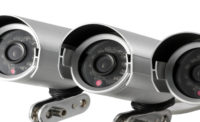These days, when it comes to storage of video, it’s choice – not chance – that determines security’s success at meeting its mission with use of technology. This is true for enterprise security leaders at the biggest organizations, where large numbers of cameras create ingest, frame rate, image quality and physical storage cost challenges. But it is equally true with small to medium-sized enterprises, which share much of the same security video needs and uses but not necessarily the same budgets or infrastructure.
Welcome to the new world of storage where the many choices – flash, solid state, at-the-edge, digital video recorders, security-dedicated network video recorders, networking to off-shelf servers or virtual storage, in-the-cloud – can scale up or scale down, mix and match to specific security and business goals.
Darrin McNew knows about choices. The engineer joined Gardner Energy of Gardner, Kansas, a handful of years ago. Back then, the utility was a division of the city’s public works department. The choice at the time: Keep or sell the utility to a private owner.
Instead, the city created an independent electric utility board responsible for the planning, development, production, purchase, transmission and distribution of all electricity for the city of Gardner.
Record and Alert
McNew, the electric operations supervisor, faced choices for security video and storage at the utility’s three substations and power plant, which operates as a peaking facility. He sees advantages of storage at the edge after facing some problems with the previous network. “Our system is not just to record but also to alert when something is happening,” he says. “And all cameras have their own DVR. Our mission is to use storage to fight losses and manage liability.”
Very far from Gardner, Dae Ho Choi, the mayor of Anyang, the Republic of Korea, helped make choices in security video storage for his city hall and the city police. Anyang is committed to security and life safety. One example: its Singing Road, made from grooves cut into the ground and when driven over, causes a tactile vibration and audible rumbling transmitted through the wheels into the car body. Drivers can hear the tune “Mary Had a Little Lamb” to help motorists stay alert and awake.
More specific to video, the 23-square-mile metropolitan area is covered with hundreds of high-definition digital video cameras linked to scores of servers running network video recording software and sophisticated pattern recognition analytics. The system links cameras to the video management infrastructure in the integrated operations briefing room at Anyang Police Department headquarters, complementing and enhancing the city’s police presence and rapid response capabilities, says the mayor. Anyang City Hall uses the same surveillance infrastructure for traffic management and forest fire prevention.
One key is a storage solution with high throughput and performance as well as the ability to scale rapidly at the lowest cost to ingest and store a constant stream of high-resolution video. Any video streaming delays, dropped frames or data corruption would hinder police responses and investigations. The storage solution also had to be capable of streaming selected videos for use in crime or disaster investigation and response without any similar glitches.
Importance of Scalability
To hold down data center real estate, power and cooling costs, scalability had to be provided in the smallest possible data center footprint, with an energy conserving architecture and the lowest possible total cost of ownership. High-performance SATA drives are configured among 460 one terabyte hard disks.
When it comes to security video storage no matter the size of the enterprise, and especially in an IP environment, experts warn that it is too easy to make the mistake of considering video data as any other IT or business data, where the only difference is the volume of data. However, there are two aspects that differentiate video surveillance data from other business data:
• Video data is streamed in real-time
• Multiple streams are handled and stored in parallel
So, in a standard IT system, the disks are used to store files of data that are read from or written to by other servers, IT systems or users. When files are written to these disks, it is done using what is called “best effort writing,” and it does not really matter if the disks are fast enough because the data is also stored or buffered by the sender; the “write” just takes a little longer, but data is never lost. These data files to a large extent are written sequentially one by one when more systems or users access the disk system at the same time.
In a surveillance system, video is received as continuous real-time data streams, from many parallel sources or cameras, and there is nowhere that data can be temporarily stored or buffered if the disk system is too slow or busy. Security video can be lost if the disk system cannot keep up all the time.
Pressure of Parallel Input
The disk load will also be massive because the disk needs to write the incoming data in parallel, to many different database files at the same time. Compared to sequential writing where only one file is written at a time, such a parallel operation with real-time video data is called non-sequential writing and causes most standard disks to perform slower.
Not surprisingly, there were a number of security video innovations at the September ASIS International event in Philadelphia.
One trend: all-in-one video surveillance network storage and management solutions designed specifically for small to medium-sized businesses and distributed enterprises. Among examples is so-called serverless computing and storage. It’s a matter of system on a chip or SOC coming together with scale-out design, which is especially important for video recording data streams that are characterized by longblock random writes. The scale-out design distributes incoming video recording streams across all resources to dissipate pixel storms, eliminate all single points of failure including any individual appliance and maximize frame rate capture for the best recording results.
Such a scale-out design also simplifies management and speeds responsiveness to changing field requirements.
What About Flash?
Then there is flash – flash acceleration with security video allows the cost and performance to scale with the number of high-resolution cameras since the application of flash scales with storage appliances. Data saves locally and can work with intelligence at the core or centralized. The danger is that in totally relying on storage at the edge, enterprise security can be compromised if there are camera problems.
In-the-cloud was also an ASIS-identified trend. For instance, in one solution that can scale down or up, using video surveillance-as-a-service (VSaaS) technology, Salient Systems integrated Axis Communications’ one-click camera connection to stream video from IP cameras and encoders over the Internet to the Dell Cloud that provides a multi-tenant environment for running virtual systems. The business bottom line: Accessibility and flexibility of cloud-based services offers security video recording availability anywhere, anytime on desktop, notebook and mobile smartphone devices.
This article was previously published in the print magazine as "Storage: Pick Choice Not Chance."
HHDs Evolve |
|
Hard disk drives continually evolve with new technological breakthroughs and customer demand. • Increasing capacity – from 3.75 megabytes to more than 1 terabyte • Decreasing size – from 87.9 to 0.002 cubic feet (like shrinking a refrigerator to a PDA) • Decreasing prices – from about $15,000 per megabyte to less than $0.0001 per megabyte (equivalent to $100 per terabyte) • Decreasing average access time – from more than 0.1 second to a few thousandths of a second • Ability to utilize low cost storage technologies
A number of storage technologies with different performance abilities exist today, including: • SATA (Serial Advanced Technology Attachment) • SCSI (Small Computer System Interface) • SAS (Serial Attached SCSI)
Information courtesy of Milestone Systems |













